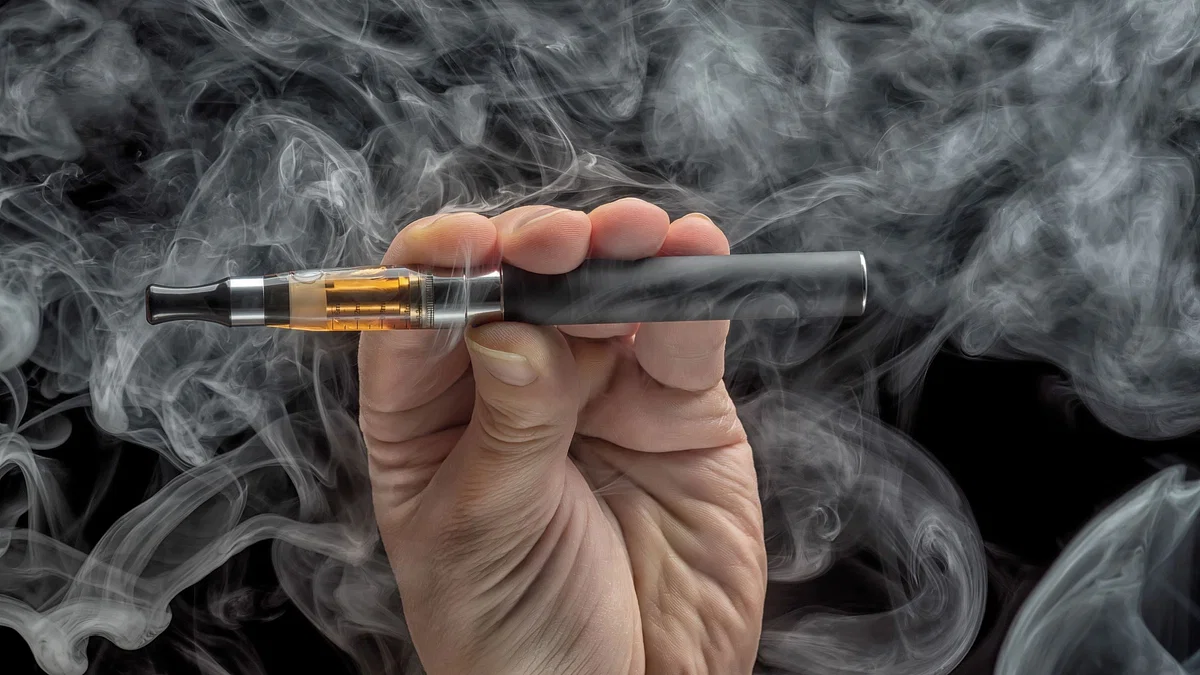In recent years, vaping has gained popularity as a potential harm-reduction tool for smokers looking to quit their cigarette habit. While the debate surrounding the safety and long-term effects of vaping continues, a growing body of evidence suggests that vaping is a less harmful alternative to traditional smoking. This article will explore the proven health benefits of vaping compared to smoking cigarettes.
Reduced Exposure to Harmful Chemicals

One of the most significant advantages of vaping over smoking is the reduced exposure to harmful chemicals. Cigarette smoke contains over 7,000 chemicals, including hundreds of toxic and carcinogenic compounds. In contrast, e-cigarettes produce an aerosol, not smoke, typically containing fewer harmful substances. Studies have shown that e-cigarette aerosol contains fewer harmful chemicals like tar and carbon monoxide, making it a less toxic option for nicotine consumption.
Lower Risk of Respiratory Issues
Smoking is well-known for its adverse effects on the respiratory system. It can lead to conditions such as chronic obstructive pulmonary disease (COPD), emphysema, and lung cancer. Vaping, on the other hand, has been associated with a lower risk of respiratory problems. Research indicates that switching from smoking to vaping can improve lung function and reduce the risk of developing smoking-related lung diseases.
Fewer Cardiovascular Risks

Cigarette smoking is a major risk factor for cardiovascular diseases, including heart attacks and strokes. The harmful chemicals in tobacco smoke can damage blood vessels and increase the risk of clot formation. While not entirely risk-free, vaping appears to pose fewer cardiovascular risks than smoking. Studies have suggested that smokers who switch to vaping may experience improvements in their cardiovascular health, including reduced blood pressure and improved circulation.
Decreased Exposure to Secondhand Smoke
Smoking harms the smoker and poses risks to those exposed to secondhand smoke. Secondhand smoke contains many of the same toxic chemicals as firsthand smoke and can lead to various health problems in non-smokers, including respiratory issues and an increased risk of heart disease. Vaping, however, produces a vapor that dissipates quickly and is generally considered less harmful to bystanders.
Easier Smoking Cessation

For smokers who want to quit, vaping can be a helpful tool in the smoking cessation process. E-cigarettes provide a nicotine delivery system in a pod juice without the harmful combustion byproducts found in cigarettes. Smokers can gradually reduce their nicotine intake by using e-cigarettes with lower nicotine concentrations, making it easier to break the addiction. Numerous studies have shown that smokers who use vaping as a smoking cessation aid are more likely to successfully quit smoking than those who try to quit without assistance.
Improved Sense of Taste and Smell
Smoking can dull the senses of taste and smell over time, making food less enjoyable and affecting overall quality of life. When smokers switch to vaping or quit smoking altogether, they often report an improvement in their sense of taste and smell. This can lead to a greater appreciation of flavors and may contribute to a healthier diet.
Understanding E-liquids and Ingredients

The liquid used in e-cigarettes, commonly referred to as e-liquid or vape juice, plays a significant role in the reduced harm profile of vaping compared to smoking. Here’s a breakdown:
- Nicotine: While nicotine is addictive, it’s not the primary health hazard in tobacco smoke. In e-liquids, nicotine levels can be adjusted, allowing vapers to gradually reduce their intake.
- Propylene Glycol (PG) and Vegetable Glycerin (VG): These are the primary ingredients in e-liquid, responsible for the production of vapor. Both are considered generally safe for inhalation and are used in various food and pharmaceutical products.
- Flavorings: The diverse range of flavors in vaping is appealing to many users. Most flavorings are food-grade, but it’s worth noting that while they’re safe to eat, the long-term effects of inhaling them remain under research.
Environmental Impact and Public Perception
While health considerations are paramount, there are also ecological and societal factors to weigh.
- Less Environmental Pollution: Cigarette butts are the most littered item worldwide, leading to significant environmental degradation. Vaping reduces this waste since e-cigarettes and vape pens are reusable, and only the coils or pods need occasional replacement.
- Odor and Aesthetics: Unlike cigarettes, which leave a lingering smell on clothes, furniture, and indoor spaces, vaping has a less invasive odor. This attribute makes vaping more socially acceptable in certain scenarios, although indoor vaping regulations vary by region.
Potential Drawbacks and Criticisms of Vaping

- Youth Attraction: A significant criticism of vaping is its appeal to young non-smokers, mainly due to the myriad of flavors. There’s a concern that this could act as a gateway to traditional cigarette smoking.
- Dependency: Even if e-cigarettes are less harmful than traditional ones, there’s a risk of dependency, especially if users choose high-nicotine e-liquids.
- Lack of Long-Term Studies: As vaping is a relatively recent phenomenon, the long-term health effects remain largely unknown. Preliminary studies suggest that vaping is less harmful than smoking, but the full health profile will become clearer with time.
Guidance for First-Time Vapers
If considering vaping as an alternative to smoking:
- Start with Low Nicotine: Opt for a lower nicotine concentration to prevent excessive intake.
- Choose Reputable Brands: Not all e-liquids are created equal. It’s essential to select established brands that adhere to quality standards.
- Monitor Your Health: Just like with any lifestyle change, keep an eye on how vaping affects your health and consult with a healthcare professional regarding any concerns.
The Evolution and Safety of Vaping Devices

As vaping has grown in popularity, so too has the technology and design behind e-cigarettes and vaping devices. Understanding these advancements can provide a clearer picture of the vaping landscape and its safety implications.
Conclusion
Vaping is undeniably gaining traction as a harm-reduction alternative to traditional smoking. With its advantages come valid concerns, requiring an informed decision for potential users. As with any health decision, it’s always best to be well-researched and consult professionals when considering a switch to vaping or any other smoking cessation method.









